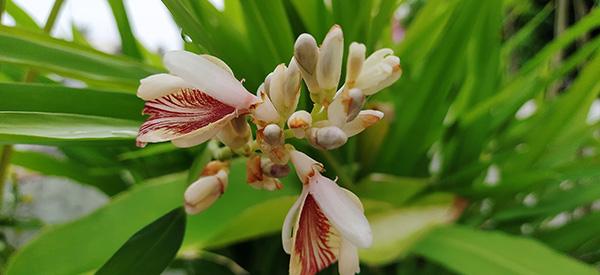
Cardamom
Cardamom (Elettaria cardamomum) is an expensive spice that comes from the seed of the perennial plant cardamom or cardamum. This plant is a relative of ginger and turmeric of the Zingiberaceae family that grows in temperate and sub-tropical climates. The seeds are the most valuable part of the plant that are consumed either in whole or its ground form. As a spice, it is commonly used in sweet and savory dishes where it lends its piney, fruity, and menthol-like aroma. Cardamom is also an important herb in ayurvedic medicine most prized for its digestive properties and highly effective action against indigestion.
The cardamom plant has two varieties: green cardamom (Elettaria cardamomum) and black (Amomum subulatum). Green is the common variety and the source of cardamom that is sold in supermarkets and used as spice or medicine. There is also white cardamom, which is the bleached version of the green variety, that is grown in regions with hot and tropical climates.
Where The Plant Is Found
Cardamom plants are now cultivated in many parts of the world. They thrive well in rainforests, sub-tropical climates and also fare up well in temperate regions. They prefer well-distributed rainfall and forest loam soil that is slightly acidic.
With increased demand, some countries begin to cultivate cardamom for the world market. China, Laos, and Vietnam became the largest producer of cardamom spice in the early 1980s. But in the 21st century, Guatemala in Central America became the leading cardamom producer in the world.
Kerala in India still produces cardamom as well as other Asian countries like Nepal, Sri Lanka, and Indonesia.
Related: The Complete Map of Edible Plants: Find Out What You Have in Your Area! (Video)
How To Identify Cardamom
Cardamom is a perennial plant that looks like ginger, only taller and with a denser canopy. The cardamom seeds, as the form they are popularly known, grow in a multifaceted pod with a thin paper-like covering. They are also usually sold in loose or ground form in supermarkets. But how does the cardamom plant look like and how do you identify it?
- Leaves. Overlapping sheaths of leaves that form into a canopy makes up the cardamom plant. They are dark green and measure up to two feet long and six inches wide. Cardamom leaves are lanceolate in shape, erect and rigid.

- Flowers. Cardamoms have numerous white flowers with a purple or red-veined lip that grow from a long and drooping panicle. Some plants may bear white, but others have yellow or even blue-colored tiny flowers. They are arranged in clusters and bounded at the end in a basal or floral scape. These beautiful and tiny flowers grow the seed pods that bear the seeds.
- Roots. Like its ginger and turmeric cousins, cardamom also has underground rhizomes. This root system spread up to 1.5 meters wide as they grow horizontally. The large clumps of underground stems are only 30 centimeters deep or less.
- Fruits. Capsule-like fruits have a rounded base with a triangular cross-section. It starts as either a yellow or green but will eventually dry out into a brown pod. Cardamom fruits are about 1 to 3 cm long and up to 1 cm wide.
- Seeds. Arranged inside the green fruit are the 15 to 20 pieces of aromatic cardamom seeds. They are small, brown-black, or reddish-brown with a sticky feel. These seeds are the part of the plant that is crushed and used as spices.
Related: Plant Identification Guide – 400 Wild Plants That You Can Forage For (Video)
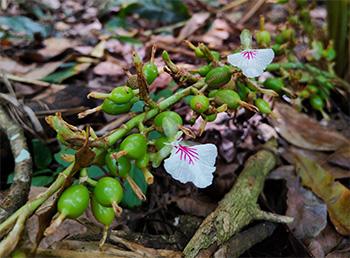 Cardamom has two main varieties that are identifiable through their fruits. The black varieties have bigger fruits than the green ones. However, green cardamom has a more potent flavor and is considered the true cardamom. The Indian cardamom has two main varieties that are cultivated as a spice:
Cardamom has two main varieties that are identifiable through their fruits. The black varieties have bigger fruits than the green ones. However, green cardamom has a more potent flavor and is considered the true cardamom. The Indian cardamom has two main varieties that are cultivated as a spice:
- Malabar cardamom
- Mysore cardamom
The name cardamom is also used interchangeably in other similar ginger species like the Amomum, Aframomum, and Alpinia. These are the commercial substitute for the true cardamom Elettaria.
How To Grow Cardamom
The cardamom plant requires either a tropical or temperate climate to thrive. It may not tolerate dry seasons that last more than three months so growing it can be tricky. And because of this, the herb is considered one of the most expensive spices next to saffron. But you can propagate cardamom using seeds that are intended for planting or through its rhizomes.
Growing Cardamom by Seeds
Seeds of the cardamom that are sold as spice are mostly sterile and with a low germination percentage. You can buy cardamom seeds for planting from your local farmer’s market or in specialized stores.
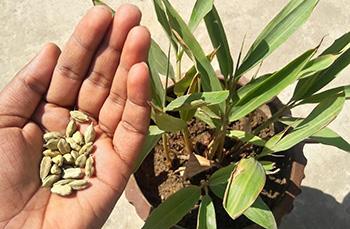
When sowing the seeds, start by putting them in a glass jar and pouring in a 2.5 percent nitric acid solution. You can purchase nitric acid in chemical stores. This solution provides nitrogen that is beneficial in seed germination. Stir the mixture well for two minutes before straining, then rinse the seeds thoroughly.
Put the seeds in a bowl and cover it with lukewarm water allowing it to sit overnight. Sow the seeds in rich humus soil at about 1/8 inch deep and ½ to 1 inch apart. Keep the medium evenly moist and keep it in a partially shady place. If you live in hot regions, cover the soil with mulch to maintain its moisture.
Germination of cardamom seeds may take at least 20 to 40 days. When two pairs of true leaves emerge, transplant the seedlings keeping the medium moist at all times. Keep them in an indoor space where they can receive at least 6 hours of filtered sunlight.
It may take three years for the flowers to grow but once established and cared for, the plant may live for up to a decade.
Related: 10 Plants That You Should Never Plant Together (Video)
Growing Cardamom Through Division
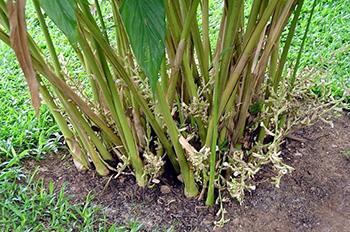 Cardamom plants that are at least one year old can be divided to grow new plants. The best time for digging rhizomes is during spring or autumn when the soil is cool and moist. Cut the underground stem of the established plant with at least three crowns and transplant it into a new hole. The hole should be twice as wide as the root clump you will be planting.
Cardamom plants that are at least one year old can be divided to grow new plants. The best time for digging rhizomes is during spring or autumn when the soil is cool and moist. Cut the underground stem of the established plant with at least three crowns and transplant it into a new hole. The hole should be twice as wide as the root clump you will be planting.
This is the easiest and economical way of planting cardamom if you already have an existing plant. It is way cheaper, faster, and more successful than when you grow them from seeds.
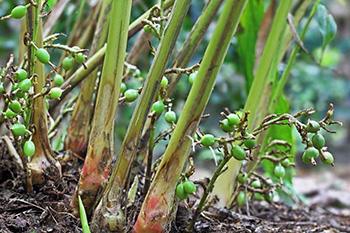
Plant Care Requirements
- Rich, loamy, or sandy-loamy soil with a pH level between 5.5 to 6.8
- A moist but well-draining soil
- A shady environment
- Morning and afternoon watering
- Organic fertilizer or compost
How To Harvest Cardamom
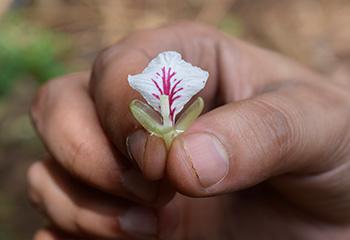 Cardamom fruits will emerge usually in the third year of their plant life. Harvesting cardamom, even the commercial spices, are done by hands which also contributes to its expensiveness. Fruit production happens in August or September and the berries will likely remain on the plant until late February.
Cardamom fruits will emerge usually in the third year of their plant life. Harvesting cardamom, even the commercial spices, are done by hands which also contributes to its expensiveness. Fruit production happens in August or September and the berries will likely remain on the plant until late February.
The best time in harvesting cardamom seeds is when the seed pods begin to turn from green to yellow. It is ideal since the fruit is still not fully ripe and will not split its seeds while harvesting. You can check if the seeds are just right by sampling a pod. Ripe pods come out easily without tugging and contain black seeds and not white. 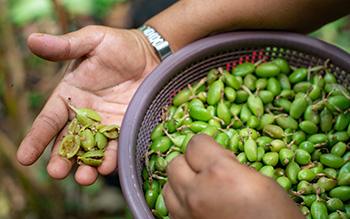
Harvest the pods starting from the base and moving up the stem of the plant. Do not force unripe fruits and leave them for harvest on another day.
Preserving the seeds begins right after harvest for the seeds to retain their flavor and aroma. Thus, you should wash the pods thoroughly after harvest. Dry the washed pods in a dehydrator no more than 120°F in temperature. You can also sun-dry the pods but they may bleach and lose their green coloring.
What Cardamom Is Good For And Natural Remedies Made From It
Its taste and fragrance make cardamom an important spice in many cuisines. But this herb is also valued for its medicinal properties especially in the treatment of indigestion. The seeds are the most important part of the plant that is ground into powder or extracted for its essential oils.
The manganese content of cardamom works against free radicals to improve metabolic activities. Its vitamin C is also beneficial in building immune resistance and preventing skin aging. It has a diuretic property, detoxifying action, carminative, and antiseptic properties. It also has an antidepressant property and is an effective aphrodisiac.
Cardamom is an excellent herb for treating the following conditions:
- Indigestion

- Fatty liver
- Bad breath and mouth problems
- Urinary tract infection and kidney disorders
- Digestive problems
- Asthma and other respiratory illnesses
- High cholesterol
- Stress and depression
- Blood clotting problems
- Impotence
- Weight loss
What Parts Of Cardamom Are Used For Remedies?
The seeds and pods of the cardamom are valuable parts for commercial purposes. But the entire plant is also useful for culinary and alternative medicine use. Pounded cardamom pods are infused into teas and consumed for the treatment of various health conditions. Its roots and leaves can also be made into a decoction as an herbal remedy. The plant can be used as a single herb or in combination with other herbs.
Cardamom Tea
Ingredients:
- 2-3 cardamom pods, crushed or powdered
- 2 tea bags of Darjeeling tea or any black tea
- 1 cup 2% whole milk
- 1 cup water
- Sugar (or Stevia), to taste
Steps:
- In a saucepan, bring water to a boil. Lower to medium heat and add cardamom and milk.

- Add the tea bags as soon as the liquid starts to boil again. Ensure that the boiling milk won’t overflow from the pan.

- Let it steep for a while. Wait for the color to change into tan or light brown. If you want a stronger cardamom tea, you can steep it longer until the liquid darkens more. Then, remove the pot from the stove and strain it into a cup.

- Add sugar or Stevia to sweeten if desired.

How to Use:
Cardamom tea is an excellent morning cup to go for awakening the senses. Enjoy the tea every morning for that feel-good, healthy habit.
Warnings And Cautions
Cardamom is likely safe when taken orally in moderate amounts. However, its safety in pregnant and breastfeeding women is not yet established. Women in this group should avoid using cardamom as safety precautions.
People with gallstones are not advised to take cardamom in an amount greater than what is usually used in food. It can trigger gallstone colic characterized by spasmodic pain. If you are suffering from internal ulcers, you should also avoid using cardamom as an herbal remedy.
Cardamom may cause allergic reactions resulting in dermatitis and breathing difficulties. While it is used to cure impotency, excessive use may only worsen the condition.
Before using cardamom, consult with your doctor first to guarantee that it won’t affect any underlying condition or interact with other medications you are already taking.
You may also like:
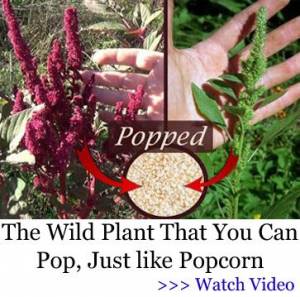 Medicinal Foods: 10 Recipes To Bring Lasting Health
Medicinal Foods: 10 Recipes To Bring Lasting Health
Add This Herb to Coffee or Tea, to Effortlessly and Fully Empty Your Bowels Every Single Morning (Learn More)
7 Natural Remedies To Reduce Blood Clots And The Risk Of Stroke
DIY Colon Detox with Ingredients You Have in Your Kitchen Right Now

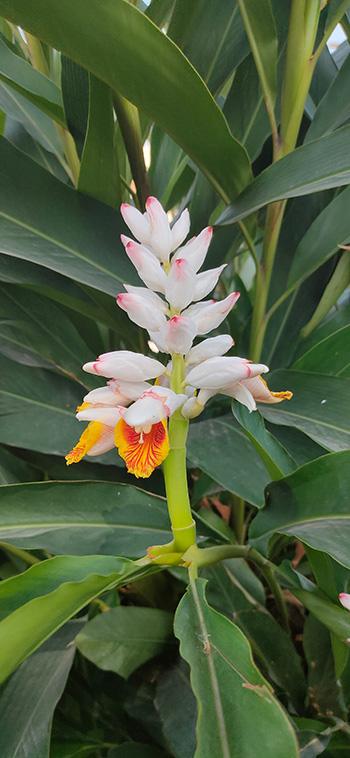
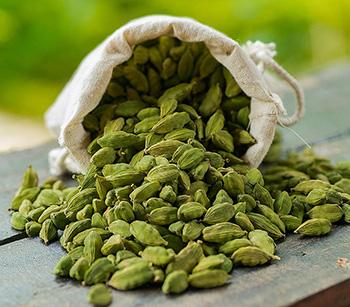
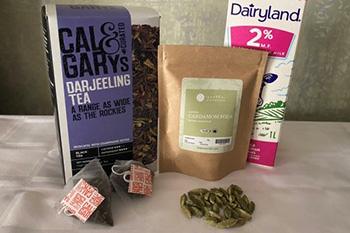
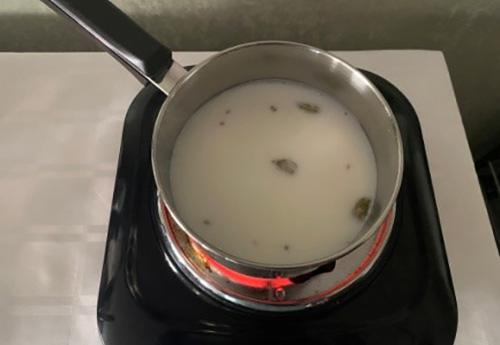
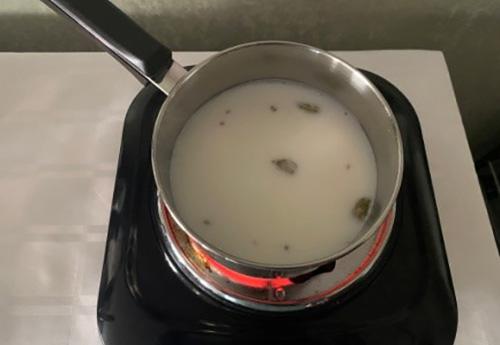
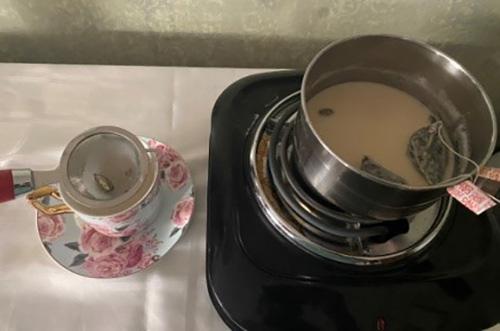
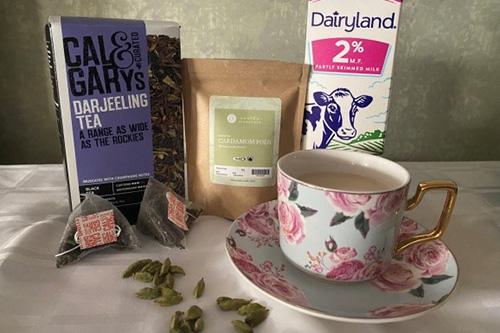
Thank you for this information. Can you use non dairy milk for this tea also?
Of course Juliette! You can make it with any nut or seed milk, just be sure to warm it slowly rather than boil it 🙂 a macadamia or cashew milk would make a lovely creamy tea!
Hello, Juliette I enjoy the discriptive way you speak of the herbs you make them come alive for a novice like me. I love love this page. Please don’t stop.
Ha ha, beat you! I’m already using organic, ground cardamom, in my freshly ground apple juice, and crockpot meals.
I just added it to my pumpkin muffin recipe again today!
I grind 3 cardamom pods with my coffee beans. Have done this for years.
Is it ok to use plant based milks?
Would powdered cardamom have the same health benefits as the seed pods? Sprinkled in coffee, tea, yogurt?
Hi Christine,
In this article you can find more details about the benefits of Cardamom:
https://www.superfoodevolution.com/cardamom-pods.html
The prime differences in cardamom pods and ground cardamom are their appearance. The pods obviously have a wholesome appearance, while ground cardamom is crushed into a fine powder.
Whole cardamom pods are preferred to retain and optimize the flavor.
Ground cardamom has a mildly sweet flavor with a unique taste.
Whole pods also have a longer shelf life compared to ground cardamom, so if you don’t use it often, opt for the pods.
A simple rule of thumb is that 6 cardamom pods equal 1 teaspoon of ground cardamom, so if you ever need to swap one for the other, use that conversion.
Many blessings and good health!
Cardamom is one of my top favourite spices! So tasty in so many different things, and you only need just a bit, yet, it goes a long way.
How long will the ground cardamon spice last before losing it’s potency?
Hi Elizabeth,
Properly stored, ground cardamom will generally stay at best quality for about 3 to 4 years. To maximize the shelf life of ground cardamom and to better retain flavor and potency, store in containers with tight-fitting lids.
Many blessings and good health!